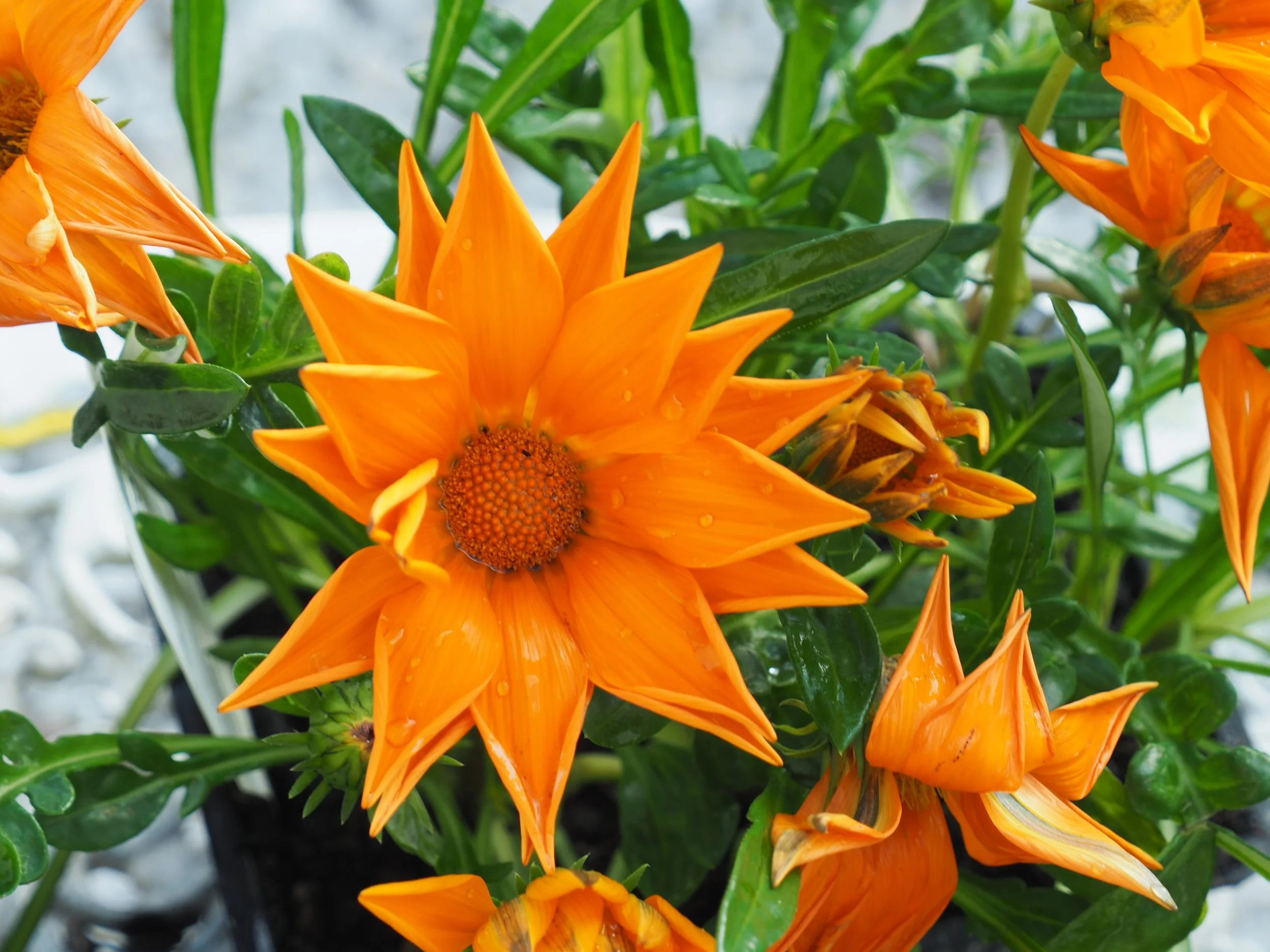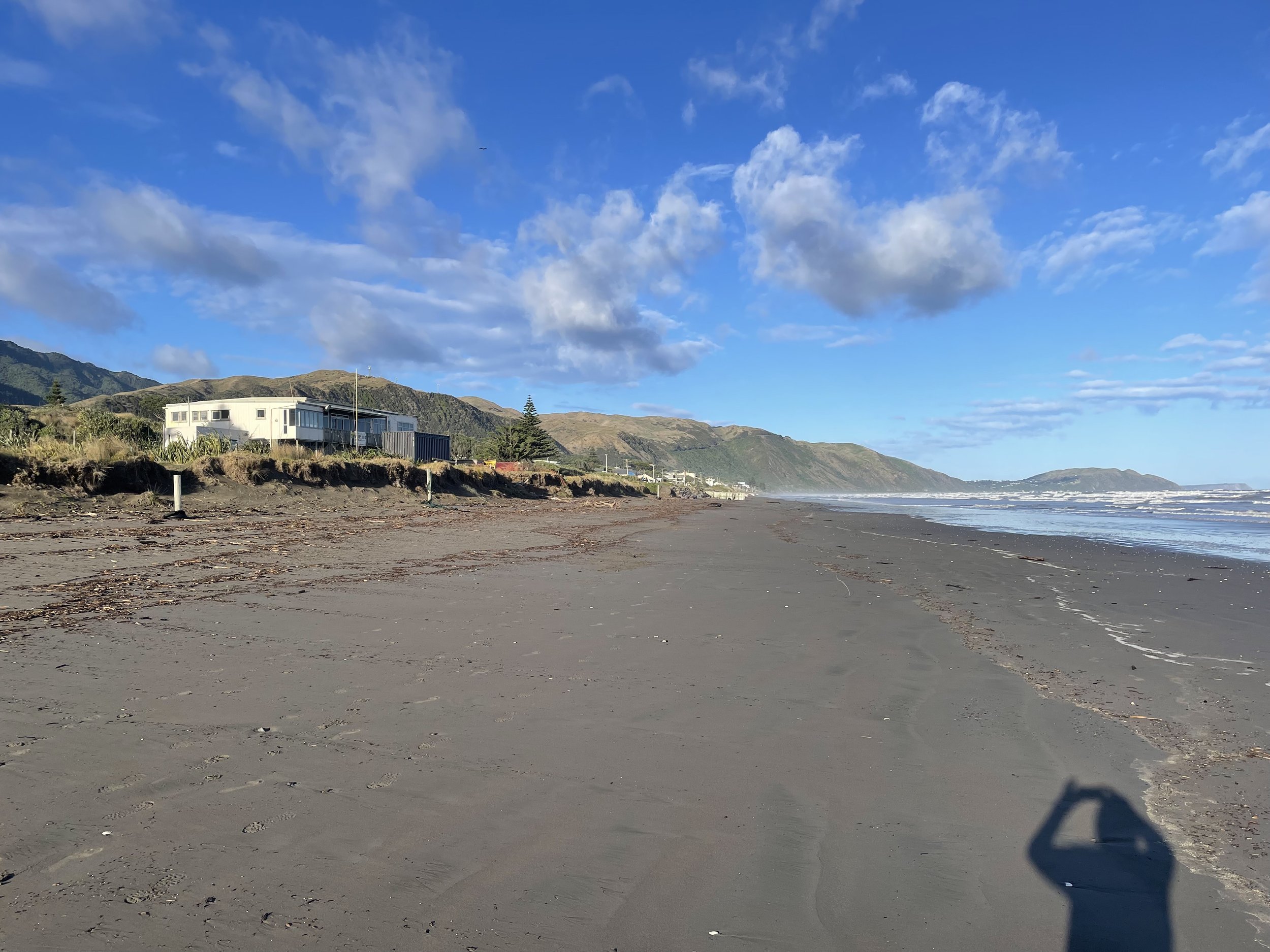Barbara, Derek and Phoebe
We gardeners know that time is always moving. There is no full stop or comma or semi-colon. Time is something we’ve invented to bring order to seeming chaos. But as all keen observers of nature know, there are lots of overlapping cycles as the world turns and the sun shines: day gradually becomes night, the sea gradually moves out and back again, summer becomes autumn, autumn becomes winter and winter becomes spring and then we’re back to summer again. Gardens don’t stand still. Nor do children. Both grow and change and have beautiful moments and small disasters. Both are yours for such a short time.
I’m waiting for the fencing guy to fence most of the garden. Until that happens, which is anyone’s guess, I can only work on the back garden and a bit of the side. There’s also the verge, let’s not forget about that strip of out-of-control weeds between the fence and the road. It’s the end of autumn. The days are shorter and colder. I can’t wear my jandals to the beach anymore. It’s that time of the year when most Southern Hemisphere gardeners need a pick-me-up. A hot cup of tea, a sun-warmed step outside and a garden book or magazine or photos to peruse. This week I found 3 such tonics.
On January 18, 2014 my son and I visited Barbara Hepworth’s sculpture garden in St Ives. He was 8. The holiday in St Ives was part of an incredible trip. The two of us spent 4 weeks travelling around Europe and the UK visiting friends and relatives and beautiful places, taking as many trains as we were able. My son is 18 now, and he’d much rather visit a pub than a sculpture garden. More about Barbara’s garden later in the blog.
I’m desperate to read about other gardeners making gardens by the sea. Most of my garden books and magazines are about country gardens or urban gardens or gardens by a river or a lake or on a balcony.
The exception is my book ‘Derek Jarman’s Garden’. Derek’s garden was in Dungenss in the UK, a wild coastal place near a nuclear power station. He created a garden that had a strong sense of place. He collected, assembled and arranged items that he found on the beach. He gardened thoughtfully and artfully. He and Barbara were artists whose gardens were, and still are, living works of art.
Phoebe in her Waihi Beach Garden in the early 90s.
The most important garden to me was my nana Phoebe’s. She lived 4 houses back from Waihi Beach. She had a sheltered garden away from the salt winds. The soil was sandy. She was a gifted and hard working gardener. I watched her garden grow and change in the 70s, 80s and 90s. Both the garden and my nana are gone. The spirit of her garden is what I’m trying to recreate here at Paekakariki.
The Surf Club and houses at Paekakariki.
Paekakariki feels like a Wellington St Ives. Maybe that’s wishful thinking. Because the only thing they have in common is that they’re both by the sea. St Ives is a beautiful fishing village, Paekakariki is a railway village (it’s where the train from Auckland used to stop for light refreshments before it arrived in Wellington). Its humble beginnings and location, perched between the hills and the sea, give it a wild kind of beauty. For many years, both villages have attracted artists and writers and thinkers and dreamers and ordinary people. All who want to live by the sea.
St Ives, January 2014.
The great thing about going to St Ives in January was the lack of tourists. It was a place I’d always dreamed of visiting. I’m not sure my son felt the same way. He would have preferred Euro Disney. Every day we walked from our little hotel high on the hill, down to the town, along the winding streets, around the wharf and onto the sand. We spent ages looking for crabs and collecting broken, sea-worn fragments of fishing buoys.
The Barbara Hepworth Museum and Sculpture Garden is behind the clock tower in the photo above. Barbara and a friend laid out the garden themselves. All of the bronze sculptures are made by Barbara and most are in their original spots. I’ll let the photos speak for themselves.
This week I’ve been working on ‘The Verge’. I started work on the area near the letterbox. It’s a narrow bank that’s covered in weeds. One weed in particular is the very definition of ‘invasive’. I’ve never seen it before. It looks like this (picture below). It has tall creeping stems that smother everything in its way.
It’s called Cape Ivy, Senecio angulatus. It belongs to the daisy family. My only hope is to keep pulling it up (as soon as the stems touch the ground they form roots) and the bits I can’t pull up, well, I’m going to cut them back and paint the stumps with glyphosate. It spreads under the ground too, which causes another problem. The bank is made entirely of sand. Sand is loose. It doesn’t clump together like clay. The Cape Ivy is stabilising the bank. Once the Cape Ivy is removed the bank falls apart. I have a plan. My plan is to: plant small sections at a time, plant closely, plant with a range of different plants, poke lots of sticks into the bank, mulch the big plants and water until established (this is the hardest part because the water runs straight off the bank and onto the footpath).
The verge.
Orange gazania.
The verge.
The pelargonium and the yellow gazanias were already growing on the verge. I planted 3 shrubs, Oleria traversii Chatham Island, a couple of Euphorbia wulfenii that had self seeded at our Wellington house, an orange flowering hibiscus from the bargain shelf, several aeoniums I’d grown from cuttings, an agave from Sal, 2 artichokes (who knows they might love it here), a bronze fennel, a comfrey (cause it’s invincible) and lots and lots of orange gazanias (because you can never have too many orange gazanias). I’ll add some nasturtiums too once I’ve cleared more of the bank.
Top tip of the week: I was visiting the local fruit and veggie shop. Jonno (who owns it) told me that he grows spring onions in a jar of water on the window sill in his kitchen. He cuts off what he needs and it regrows. No soil needed. Second-to-top-tip of the week: don’t leave a treasured garden book on the bed where a badly behaved labrador can jump up and eat it.
Broken fishing buoys, St Ives.
See you next Sunday.












































